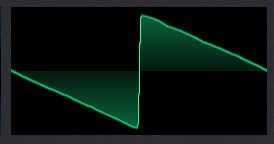Agreed, it is very exploratory / random. Not sure if people will like that or not. I find it pretty fun - and actually you can treat a single neural net model as a synth in itself and get to know particular neurons. Curation might be an interesting feature, could label particular neuron parameters descriptively (BrownFuzz, SawPhaser, etc.). Music Engineer had some interesting ideas above about sorting/highlighting the most salient neurons.kippertoffee wrote: what becomes apparent is that sound design is totally trial and error. Seems like there's very little chance of actually learning the thing and being able to produce a sound I imagine. Not that this is necessarily a bad thing, but it might limit it's appeal.
Earlier/later layers will produce certain types of effects on the waveform in general, so there is some broad knowledge you can gain from understanding the neural nets. But it's mostly experimental due to the randomness in how models are initialized/trained.
Not at the moment. I have an oversampling knob currently (1x - 8x) to help with high pitch notes or waveforms with high harmonics. But need to explore if there are some more efficient techniques.bitwise wrote: Is it an alias-free oscillator ?




